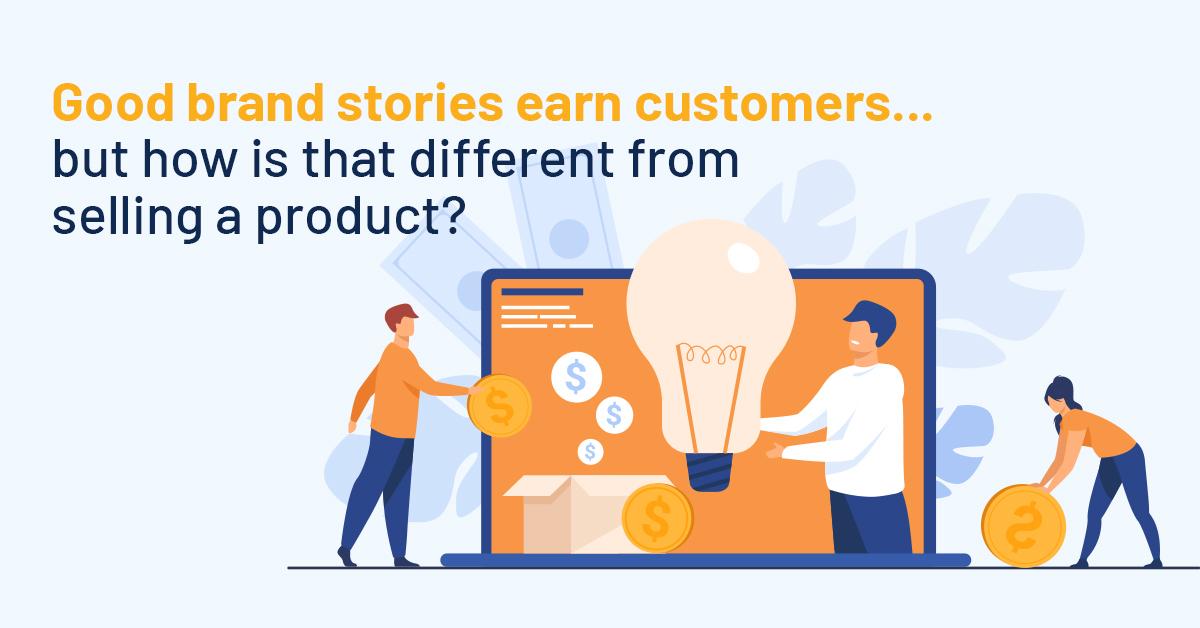You’re not in business to lose money…
but should you be trying to do more than earn a simple buck or two? Yes, absolutely. In recent years, we’ve seen that companies (or brands) that demonstrate a commitment to their values, brand story, and their audience resonate more with customers. Before a person buys a bike or hires a contractor, for example, they need to know more than what you’re selling and how much it costs.
Some questions customers ask themselves about your business include:
What kind of people are running this business?
What sort of values does this business believe in?
How do these products or services fit into my lifestyle?
When you help customers make a meaningful connection with your business, you build value in your brand and create long-lasting customer relationships.
In order to do that, you must tell a brand story that resonates with their interests, goals, and inspirations. When you create and share content that says, “Our brand is fueled by the same energy that motivates you,” you’ll do more than sell a product—you’ll earn a customer for life.
As Sarah Kennedy, the VP of global marketing at Adobe Experience Cloud, points out in an article by Forbes, “The companies that will excel long-term are the ones that know it’s not just about shareholder value. It’s also about focusing on the customer and employee experience.”
Okay, so we know that telling a good brand story can help us earn a customer. But how is that different from selling a product?
We asked our business development manager, Stephanie Danielsson, how she would explain the difference between “earning a customer” and “selling a product.” Here’s what she had to say:
Tell your story. Earn a customer.
The concept goes beyond “brand awareness” and might be more easily thought of as “brand building” or, even simpler than that, “storytelling.” No matter what you call it, its purpose is to earn a customer. It’s a softer sell and a longer play. When your prospective customer can relate to your brand message on an emotional level, you have just formed a strong bond that could lead to a sale down the road.
A customer might not purchase a product right away, but when it’s time to for them to buy a similar product or service, they will have your business at the top of their mind. Why? Because you have shown them that your business is about creating an experience. Because your brand story means something to them. Because you’re saying, “Let’s do this together,” and not “Just take this and go.” Sharing stories and making connections will create an ongoing partnership between you and your customers.
Theoretically, a customer will get on board with your brand, purchase a product or service, and then return to you for more again and again. That’s the difference—you’re not just selling something; you’re establishing a mutually beneficial relationship. If you keep it up, it could last a lifetime.
Keep the conversation going.
You can tell your story with a wink and a nod to the stuff you’re selling as long as you do so thoughtfully. How? Offer sales-oriented content that speaks directly to your customers’ needs. If you were a skincare company, for example, you could:
- Send an email that says, “You’re probably running low on your favorite hand cream”
- Share a blog entitled, “3 helpful tips for healthy skin this winter”
- Present employees as friendly experts in the field of skincare
- Post testimonials from happy customers in emails and on social media
- Link this content to a product page of various hand creams
Making a customer continually feel valued and a part of your brand will keep them around. This approach creates demand in lieu of simply generating leads.
Sell a product. Earn a dollar.
Once you’ve earned your customer through storytelling, it will be easier for them to buy your products. Selling the product is meant to be a “quick win” approach. You’ve already generated interest, now’s the time to follow up with some hard-and-fast sales conversations.
Your marketing and communications approach will be similar—you’ll still use email, write blogs, and post on social media—but the messaging will be geared more toward the sale. Let’s keep pretending you’re a skincare company. You could:
- Send an email that says, “Running low? Take 10% off hand creams today!”
- Share a blog entitled, “7 best-selling hand creams under $20”
- Create an “I can’t believe it was only $10” video series featuring happy customers
- Offer discount codes to “VIPs” for signing up to newsletters or following on social media
- Send messages of thanks that include rewards
- Develop digital ads that remind your audience about the sales you’ve got going on
What’s the point?
Before you write up a marketing plan or campaign, you need to know the importance of building a solid foundation for your brand. When you have a clear understanding of, “Okay, we’re still telling our brand story—it might be a little while before we see the results we want, but it will be worth it in the long run,” you’ll have more measured expectations.
Aim to earn lifetime customers over making a quick buck.
Contact us!
As your creative marketing partners, we can help key stakeholders see the bigger picture at your business. Ready to get started? Contact us online today! And don’t forget to follow us on LinkedIn, Facebook, and Twitter.
Sign up for our newsletter...
Give us your email and get our stuff delivered to your inbox. You might not regret it.
Thanks for subscribing! You won't be sorry.
Uh oh. Something went wrong.
We respect your privacy and take protecting it *really* seriously. Seriously.

